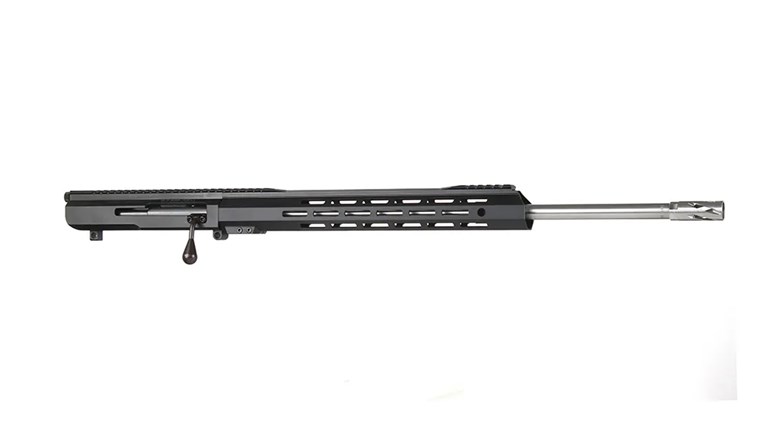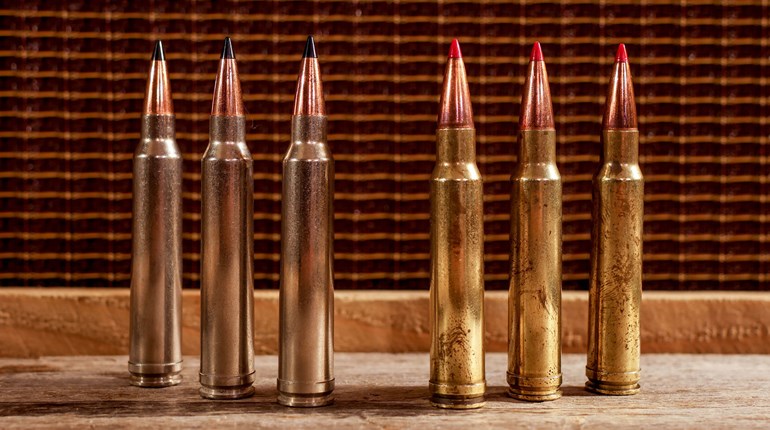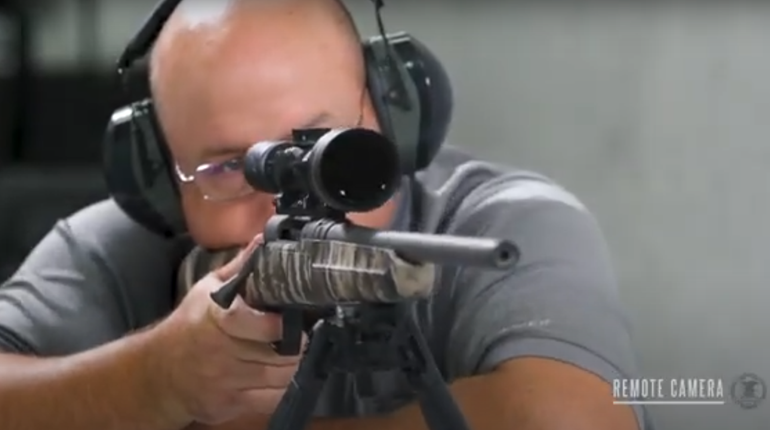
Perhaps the strongest suit of the Drake Associates Stalker series of high-end bolt-action rifles is the many ways the guns can be personalized to an individual shooter. A shooter with longer arms needs more length-of-pull? No problem. Want to get a better cheek weld? Again, it's a simple fix. Is the recoil bothering your shoulder? Move the recoil pad. Oh, and all of these changes can be made in the field, with no tools, in seconds. Each adjustment is made with simple, intuitive levers that squeeze, pull or slide easily to accomplish their task.
To add to the utility of the rifle, the stock folds for easier transport in the included "Drag Bag," a 42-inch case specifically designed for the Stalker. A full-length Picatinny rail graces the top of the rifle for mounting optics, and 4-inch main and 2-inch secondary rail sections are found at the three-, six- and nine-o'clock positions. The main sections are mounted at the end of the fore-end tube, while the secondary sections are mounted in front of the magazine well. Lights, laser sights, even ballistic calculators can be mounted to the rifle's chassis. The Stalker is infinitely customizable to whatever task it is assigned.
The Stalker has at its heart a Remington Model 700 Long Action receiver, heavy tactical-contour barrel and a single-point cut, Competition/Match chamber. It was designed as an upgrade to the military's M24E program, with a similar profile and accuracy truing. The trigger is a Remington X-Mark Pro adjustable unit, which is set at 3.5 pounds and has a 2-pound range of adjustment. The Stalker tested had a trigger pull of 3 pounds, 15.1 ounces, and broke cleanly with no noticeable creep detected. Cycling the Stalker was simple and required minimal effort, with the bolt's movements precise and exact. The detachable-box magazine yielded the only complaint about this entire system, with a loose fit that required occasional reseating.
Once the shooting starts, though, the Stalker is all business, and business is good. This rifle is an unmitigated joy to shoot, with accuracy that would please the most demanding of precision-rifle shooters. I was a little apprehensive about the .300 Win. Mag. chambering, especially shooting it from a bench through a bolt-action rifle. I needn't have worried, though—the Stalker's generous recoil pad absorbed the vast bulk of the powerful magnum cartridge and left my shoulder happily bruise and pain free. The rifle's design does such an excellent job taming the .300 Win. Mag. recoil that reduced-recoil 150-grain loads used for initial sighting-in were indistinguishable from the full-power 200-grain rounds tested later on.
Any pain I may have experienced from shooting the rifle, however, would have been instantly forgotten in the waves of jealousy emanating from my fellow shooters on the line. The Stalker is insanely accurate, capable of producing groups I could only dream of with most rifles. While my shooting produced approximately minute-of-angle groups, this is hardly indicative of what this rifle can do—Christopher Drake of Drake Associates pointed out this very rifle was shot at Fort Polk using a 220-grain bullet and resulted in a 2-inch group at 800 yards.
I spent the night before the range trip acquainting myself with the Stalker, setting it up on my kitchen table and adjusting the length-of-pull, cheekpiece height and recoil-pad location before bringing it to the outdoor range. The rifle's top Picatinny rail allowed a Nightforce NXS Tactical 3.5-15x50 mm riflescope to be mounted precisely where eye relief was optimum. The combination was then boresighted before shooting, and only minimal adjustments were needed to get on target at the 100-yard range.
Results show the Stalker lets its accuracy do the talking. Sub-MOA groups were achieved with an effort that would be described as "minimal" except it would be an insult to minimal efforts. I'm a pistolero at heart who subscribes to the theory if you throw enough lead downrange you'll solve your problem. Only recently have I started thinking about the proper methods for long-range-rifle shooting, and even with my (extremely) meager background, I was able to produce groups that caused accomplished shooters on the firing line to congratulate me. The Stalker was the true star on the range, no question. I have little doubt someone with more experience at long-range shooting could significantly shrink the groups I achieved.
For the discriminating rifle shooter, having a reliable, accurate tool is key. Having one that can adapt to different needs while retaining reliability and accuracy adds significant utility to one's armory. The Drake Associates Stalker is such a rifle, offering a potent mix of accuracy, flexibility, reliability and customization possibilities that can fill any role one might envision for a bolt-action rifle. In fact, the only downside to the Stalker is it definitely removes the possibility of less-than-stellar shooting that might be the fault of the rifle—it puts the onus squarely back on the shooter.

































